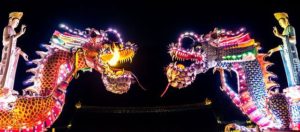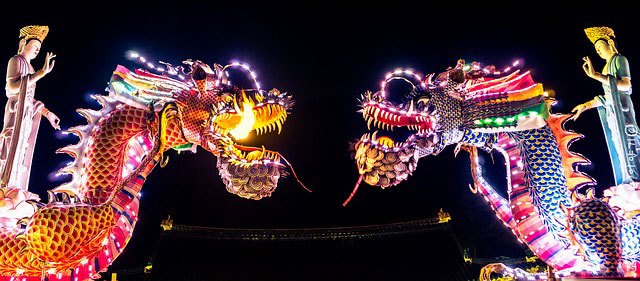China – a country of many impressions. When people refer to China, the things that usually come to mind are facts such as the population of the country, the difficulty of the language and the nation’s rich history. Subconsciously, however, there’s a very important symbol sealed in your mind. You’ve surely seen the so-called “Chinese dragon” at least once in your life.
This traditional symbol has spread all around the world the same way as their language. You might have noticed it in a Chinese restaurant, a Chinatown district or even as a tattoo on someone’s skin. As you might have already guessed, the dragon is a very ancient, respected symbol that also bears numerous meanings. But what is the most important thing about it?
The origin of the Chinese dragon
The first stories about dragons date back as far as thousands of years ago when Yandi (a legendary tribal leader) was born by his mother’s telepathy with a mighty dragon. With the help of the dragon, and allied with Huangdi (a legendary tribal leader), they opened the prelude to Chinese civilization; so Yandi and Huangdi were considered to be ancestors of the Chinese people. As time has gone by, Chinese people have started calling themselves the descendants of the Chinese dragon.
From then on, the dragon has become a symbol of great significance and value. The mythical creature started being associated with having a very high rank and status. For example, only the emperors were allowed to wear a dragon symbol on their clothes. Colors also played a big role in the mythological powers of the Chinese dragons. Emperors would often choose the color of their Chinese dragon to show the nature of their authority. The color they’d pick would become the most important color in society, with nobody else being allowed to wear it unless they were ready to face punishment.
How many dragons are there?
 So how many dragons are there in Chinese mythology, and are they connected in any way? Some of the most well-known Chinese dragons are the nine dragons. According to a very popular legend in China, the Chinese dragon King has nine sons. These nine dragon sons all look different and hold various powers. For example, the Chinese believe that there is a dragon who looks like a big lizard – a hybrid between a fish and a dragon. This one is called 螭吻 Chīwěn and he’s considered to be the third son of the Dragon King. Chīwěn’s purpose is to swallow evil spirits to keep them away from the humans. Because of this, some people tend to build statues and place them on their roof’s ridgepole to feel protected. There’s also a dragon who warns people of incoming disasters. He is supposed to be very noisy, which is why you can often see this dragon engraved on bells.
So how many dragons are there in Chinese mythology, and are they connected in any way? Some of the most well-known Chinese dragons are the nine dragons. According to a very popular legend in China, the Chinese dragon King has nine sons. These nine dragon sons all look different and hold various powers. For example, the Chinese believe that there is a dragon who looks like a big lizard – a hybrid between a fish and a dragon. This one is called 螭吻 Chīwěn and he’s considered to be the third son of the Dragon King. Chīwěn’s purpose is to swallow evil spirits to keep them away from the humans. Because of this, some people tend to build statues and place them on their roof’s ridgepole to feel protected. There’s also a dragon who warns people of incoming disasters. He is supposed to be very noisy, which is why you can often see this dragon engraved on bells.
The difference with the West
As you may have noticed, the Chinese dragons are very different from the Western depiction of those creatures. In China, they aren’t something to be afraid of, but rather worshipped deities. They’re said to be kind and noble, symbolizing goodness, excellence, power, and energy. Chinese dragons are mainly considered as protectors that keep people from harm and typically live in heaven or in places of worship.
Nowadays, Chinese dragons are still a big part of Chinese culture, even though nowadays they’re viewed more as mascots than deities. However, the symbol is still highly respected by Chinese people, and some still believe in its mystical powers. What’s more, the dragon also plays a role in the Chinese zodiac. People born under this sign are believed to be very ambitious and successful. A little tip from us – the next year of the Dragon will be 2024.
Whatever the meaning, the Chinese dragon has clearly become a symbol of China that’s recognizable the world over. So next time you see one, make sure to touch it for good luck and protection!
